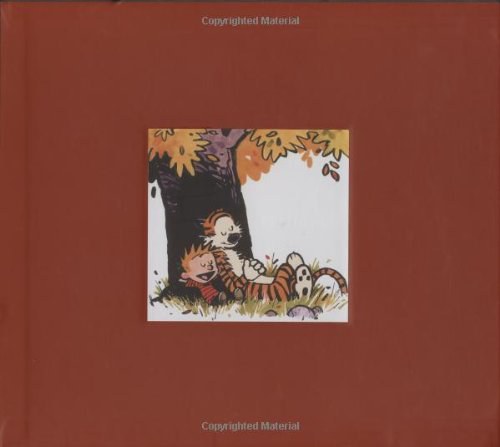
Beatriz Colomina《Privacy and Publicity》
书刊介绍
内容简介
Through a series of close readings of two major figures of the modern movement, Adolf Loos and Le Corbusier, Beatriz Colomina argues that architecture only becomes modern in its engagement with the mass media, and that in so doing it radically displaces the traditional sense of space and subjectivity.Privacy and Publicity boldly questions certain ideological assumptions underlying the received view of modern architecture and reconsiders the methodology of architectural criticism itself. Where conventional criticism portrays modern architecture as a high artistic practice in opposition to mass culture, Colomina sees the emerging systems of communication that have come to define twentieth-century culture -- the mass media -- as the true site within which modern architecture was produced. She considers architectural discourse as the intersection of a number of systems of representation such as drawings, models, photographs, books, films, and advertisements. This does not mean abandoning the architectural object, the building, but rather looking at it in a different way. The building is understood here in the same way as all the media that frame it, as a mechanism of representation in its own right.With modernity, the site of architectural production literally moved from the street into photographs, films, publications, and exhibitions -- a displacement that presupposes a new sense of space, one defined by images rather than walls. This age of publicity corresponds to a transformation in the status of the private, Colomina argues; modernity is actually the publicity of the private. Modern architecture renegotiates the traditional relationship between public and private in a way that profoundly alters the experience of space. In a fascinating intellectual journey, Colomina tracks this shift through the modern incarnations of the archive, the city, fashion, war, sexuality, advertising, the window, and the museum, finally concentrating on the domestic interior that constructs the modern subject it appears merely to house.
相关推荐
-

中国园林鉴赏手册
中国园林鉴赏手册 本书特色 园林艺术是中国众多传统文化瑰宝中一颗璀璨的明珠。早在商周时期,园林的雏形便已出现,商纣王筑鹿台,周文王建灵囿,主要用以狩猎。至汉代,...
-

京剧卷-说谭鑫培
京剧卷-说谭鑫培 内容简介 1990年,为了弘扬民族文化、振兴京剧艺术,文化部举行了纪念徽班进京二百周年盛大演出活动。各地京剧院团纷纷进京献艺,一时间你方唱罢我...
-

中国蓝子
中国蓝子 本书特色 ★ 16开软精装,西泠印社出版社出版★ 原书首版于1925年,由菲尔德自然史博物馆出版★ 本书按照原书版式重新出版,并以中英文对照形式编排★...
-

书法离钩
书法离钩 本书特色 本书体系完备,收罗资料全面,对了解和学习皆有重要意义,是明代书法重要文献。古代书法文献,今人学习范本书法离钩 内容简介 《书法离钩/艺文丛刊...
-

雕刻美色-广东玉雕
雕刻美色-广东玉雕 本书特色 挖掘文化瑰宝,凝聚奇思妙想,洞察社会幽微,守护精神家园。雕刻美色-广东玉雕 内容简介 文化遗产由物质文化遗产和非物质文化遗产构成。...
-

篆刻学
篆刻学 本书特色 邓散木著的这本《篆刻学》是《人美文库》 之一 。本书分上、下两编,上编为知识性的内容,介绍了 文字的由来,篆书的演变,印章的种类、流派等。下 ...
-

张光直《商文明》
本书是基于所有可以利用的材料而撰写的一部简明而又整合的中国商代文明史,商文明的研究者传统上都是文献、甲骨、金文和考古等专
-

甲骨文书法
甲骨文书法 内容简介 中国的书法是文字的书写艺术,要研究书法必先了解文字的起源和构造。甲骨文是我国*早的可识文字,是书写或隽刻在龟甲、兽骨上的卜辞,亦有少许的记...
-

jQuery权威指南(第2版)
《jQuery权威指南(第2版)》内容简介:本书第1版3年来一直畅销不衰,是jQuery领域的标杆之作。4大网上书店的读者评论超过2100条,
-

行草临贴十八谈
行草临贴十八谈 内容简介 《行草临帖十八谈》不是一本高深的理论著作,它是一个研习书法50年的老书友对书道同行们尤其是对初习行草的朋友们的倾心交谈。没有花架子,没...
-

森眠子的手绘水彩教程
《森眠子的手绘水彩教程》内容简介:《森眠子的手绘水彩教程》从绘画工具、色彩原理、涂色技法、Q版人物和漫画人物的绘制技巧、多种
-

榆林窟艺术
榆林窟艺术 本书特色 榆林窟壁画艺术是敦煌石窟艺术的重要组成部分。它在佛教思想、壁画内容、表现形式等方面,均与莫高窟一致,甚至一些壁画的作者也是与莫高窟共有的。...
-

文徵明书千字文三种-历代名家小楷从帖-05
文徵明书千字文三种-历代名家小楷从帖-05 本书特色 在台北故宫博物院,藏有两件文徵明小楷《千字文》手卷。其中一件为纸本,高二十八厘米,横五十二点七厘米,卷后识...
-

修改软件的艺术
David Scott Bernstein敏捷教练,曾为IBM、微软、Yahoo等企业提供敏捷实践指导。
-

蟋蟀谱集成-王世襄集
蟋蟀谱集成-王世襄集 本书特色 《蟋蟀谱集成(王世襄集)》由王世襄纂辑,主要内容:养蟋蟀之风古已有之,历代不衰。王世襄从全国各地图书馆及藏书家那里搜集到三十多种...
-

贝格莱特《从文字到影像》
《从文字到影像:分镜画面设计和电影制作流程(第2版)》电影故事的表现形式从未像今天这样丰富过,成千上万的新电影人正在利用着那
-

(精)名赋翰墨2:古今名家墨迹
(精)名赋翰墨2:古今名家墨迹 本书特色 ★ 10开,天津人民美术出版社出版★ 经折装,印制精良,设计新颖★ 收入元赵孟頫《行楷赤壁赋》、明文徵明《行书赤壁赋》...
-

故梦-上
故梦-上 本书特色 本书是文辞优美的电视剧故事,描绘没落贵族陆天恩坎坷动荡的百年人生和情感传奇。他的人生伴随着中国近代百年的沧桑巨变,因而是近代百年的一个抽样。...
-

溥儒-历代名家书心经
溥儒-历代名家书心经 本书特色 《心经》是中国佛教中*著名的一部佛经,全称为《般若波罗蜜多心经》,也是汉传佛经中*短的一部,因其旨意精徽且便于持诵而广为流传。它...
-

朱文正高考速写精品教学
朱文正高考速写精品教学 本书特色 速写是美术高考三大必考科目之一,有着与素描、色彩平起平坐的态势,其重要性不言而喻。朱文正编著的《朱文正高考速写精品教学》的主要...





